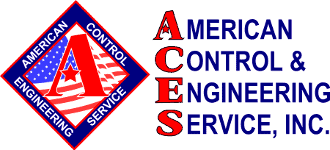THE MYSTERY
An aerospace manufacturer contacted ACES with concerns about a 45′ conveyor oven used to heat-treat primer on aircraft parts. The oven was brand new from the manufacturer, purchased as an improvement over a defunct oven with unusual sensors: the operators would touch the finished parts with a fingertip to see if they were still tacky.
While the new oven was an improvement over the human-nerve-ending recording method, the customer discovered that it was still 40-100º over the desired temp of 160-180º, even with the burners on low and the blowers on high.
THE PERP
The customer asked the CSI (Control Systems Investigator) on the scene to install infrared thermocouples to record the oven temperature as the parts rolled through. But after interviewing the customer’s team, the CSI identified changes to the fuel train that the manufacturer needed to make in order to bring the maximum temperature down. After those issues were resolved, the uniformity was improved, but was still inconsistent.
Upon further investigation, the CSI determined that infrared thermocouples were not a good fit for this oven. In addition, installing four of them — one for each zone — would cost $10,000 – 20,000.
THE SOLUTION
The ACES CSI designed a set of four fixed-position thermocouples sandwiched between pieces of plastic composite. To replicate actual part temperature in real time, the plastic composite is the same material as the parts being heat-treated. He also tuned the oven so it’s more stable. With these modifications to recording and tuning the customer now has accurate, consistent temperatures and reliable reports throughout all four zones of the bake cycle at any time of day.
CASE CLOSED
When people think about troubleshooting a piece of equipment, they think of older legacy machinery that needs maintenance and fine-tuning to be productive through its complete lifecycle. However, at ACES we commonly deal with brand-new equipment that was never properly commissioned. In this case the manufacturer didn’t take the time to identify the customer’s unique needs and specifications.
When ACES designs a new piece of equipment we always start by asking questions such as:
• What do you need to accomplish?
• What are the specifications?
• What are your expectations?
Are you in the market for a new piece of equipment, or do you have an older machine not running to spec? Give us a call for a free estimate.
